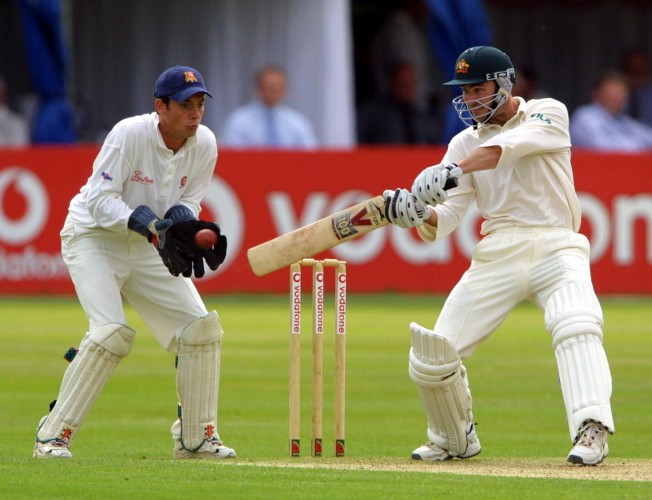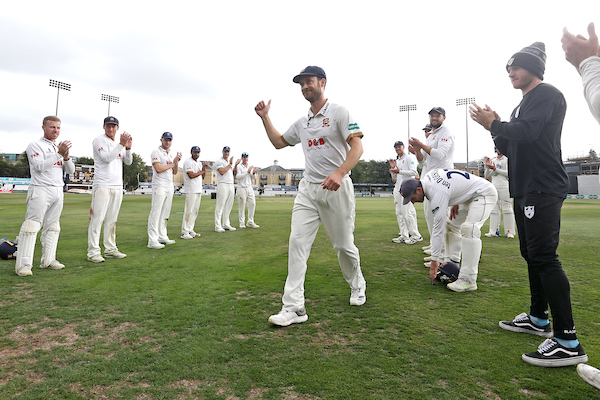This week’s Cult Heroes looks far back into the history books to a player who 19 years at the Club and played one Test for England.
Jack O’Connor was a real Cult Hero for the Club and played alongside some of the other greats in the Club’s history such as Tom Pearce, Morris Nichols and Hopper Read.
This series is supported by Allen Ford and we thank them for their continued support.
Essex Career Stats (1921-1939)
Debut: 14 May v Worcestershire (County Championship)
Appearances: 516
Runs: 27,722
First Class Average: 35.18
Highest Score: 248 v Surrey at Brentwood in 1934
Centuries: 71
Fifties: 127
Wickets: 537
Average: 32.63
Footage of Jack O’Connor in action during the 1934 season at Castle Park, Colchester. The match was a draw against Sussex in the County Championship where he scored 63 and 8 – view scorecard.
Born in Cambridge on November 6, 1897, Jack O’Connor was an attractive stroke maker and proved to be the outstanding Essex batsman for two decades preceding World War II. A right-handed batsman and spin bowler, he made his debut for the County aged 23 when he was selected to play against Worcestershire at Leyton in May 1921 but was run out for thirteen. His career started modestly with just four matches that year and for a player that was to prove such an accomplished and illustrious servant to Essex cricket, his early experiences in the first team were quite unspectacular.
Initially, he seemed nothing out of the ordinary playing somewhat carefully and although he often laid solid foundations for his side, his dour approach lacking enterprise was not the style that got people talking fondly about his entertainment value as a batsman.
However, having become an established member of the team in 1922, and with a first century to his name when scoring an unbeaten 102 against Northamptonshire, the confidence began flowing into his game and correspondingly he started to attract favourable comment from the Essex public as he blossomed into a stylish batsman always looking to impose himself on opposition attacks.
With a quick eye and nimble footwork, he added power into his shots and, using exemplary technique, he was brilliant when facing spin bowling. However, despite being a fine driver and hooker of the ball, he failed to disguise his dislike for fast bowling.
He was the first professional to captain Essex when he took over against Somerset in 1938 and he accumulated 71 centuries for the county, including ten against old adversaries Kent, during a career which saw him become a cornerstone of the batting. He first reached 1,000 runs for a season in 1923 when aggregating 1,218 as his career started to blossom. Known as the ‘Laughing Cavalier’, it was in August that year, when Jack started to attract the headlines having complied scores of 111 not out, 128, 93 and 99 in consecutive matches.
Although he failed by just 3 runs to reach the four-figure mark in 1924, he cleared the milestone the following year and continued to do so for the next fourteen seasons until first-class cricket ceased with the outbreak of World War II. His most productive summer came in 1934 when he scored 2,350 runs including nine centuries at an average of more than 55.
Known as the ‘Laughing Cavalier’, Jack was born with cricket in his blood. His father was a leg-spinner with Derbyshire, his uncle, Herbert Carpenter, was for years one of the mainstays of Essex batting while his great uncle, Robert Carpenter, had been one of the leading batsmen in England in the 1860s.
Jack was also a fine bowler and took a hat-trick at Worcester in 1925. He just missed out on the “double” the following season when he scored 1,402 runs and took 93 wickets. Three years later, he aggregated 2,256 runs at an average of 47.44 including six centuries whilst during the following summer; he accumulated 2,288 runs at 44.86 with nine hundreds. One of those came at Folkestone against Kent where he scored 116 of which 92 runs came in boundaries. The old adversaries included the formidable leg-spinner ‘Tich’ Freeman, a bowler whom Jack considered as “the finest leg-spinner that I ever faced and there were a lot of good ones in those days.
His run scoring for the county was prolific. In 1934, he scored 2,350 runs at just under 56. During this season, he recorded his highest score of 248 against Surrey at Brentwood. Although this was the fourth and final time that he as to pass the 2,000 runs mark in a season, he continued to be a thorn to opposition attacks.
For years, he was on the verge of Test selection. He played once against South Africa in 1929 and that winter, took part in three matches for the M.C.C. in the West Indies, which Wisden then called Representative Matches, but which are now included in the Test records, though the English side could not possibly be described as more than England A. In 1939, Jack scored 1,716 runs in 1939 at an average of 37.30, the fifteenth successive year that he had topped the 1,000 runs milestone.
In 516 first-class matches for Essex, he scored 27,722 runs from his 864 innings at an average of 35.18. A small man who bowled slow right-arm, his repertoire included leg-breaks and off-spin and allowed him to capture 537 wickets at 32.63 which included 17 five-wickets hauls and two 10-wickets hauls.
In all first-class cricket, he made 28,917 runs with an average of 34.79, scored 72 centuries, including at least one against every other county and both Universities. He considered that his best innings for Essex was the 111 not out against Hampshire at Leyton in 1923 after the county had been set 185 to win. O’Connor apart, not one batsman reached 17 but he steered the side to victory hitting 18 fours in an innings spanning three hours and we won the match with two boundaries in the final over.
Jack made a hundred against every other first-class county of the time and also the Cambridge and Oxford University teams, but the Second World War brought an end to his career. His final match for the county came at Clacton where he signed off with an unbeaten 54 in his final innings before Ken Farnes took 6 for 47 as Essex beat Northamptonshire by 210 runs.
After his retirement he was for many years coach at Eton and in 1946 and 1947 played for Buckinghamshire. Later, he coached at Chigwell.
He died in the Forest Hospital; Buckhurst Hill on February 22, 1977 aged 79.












